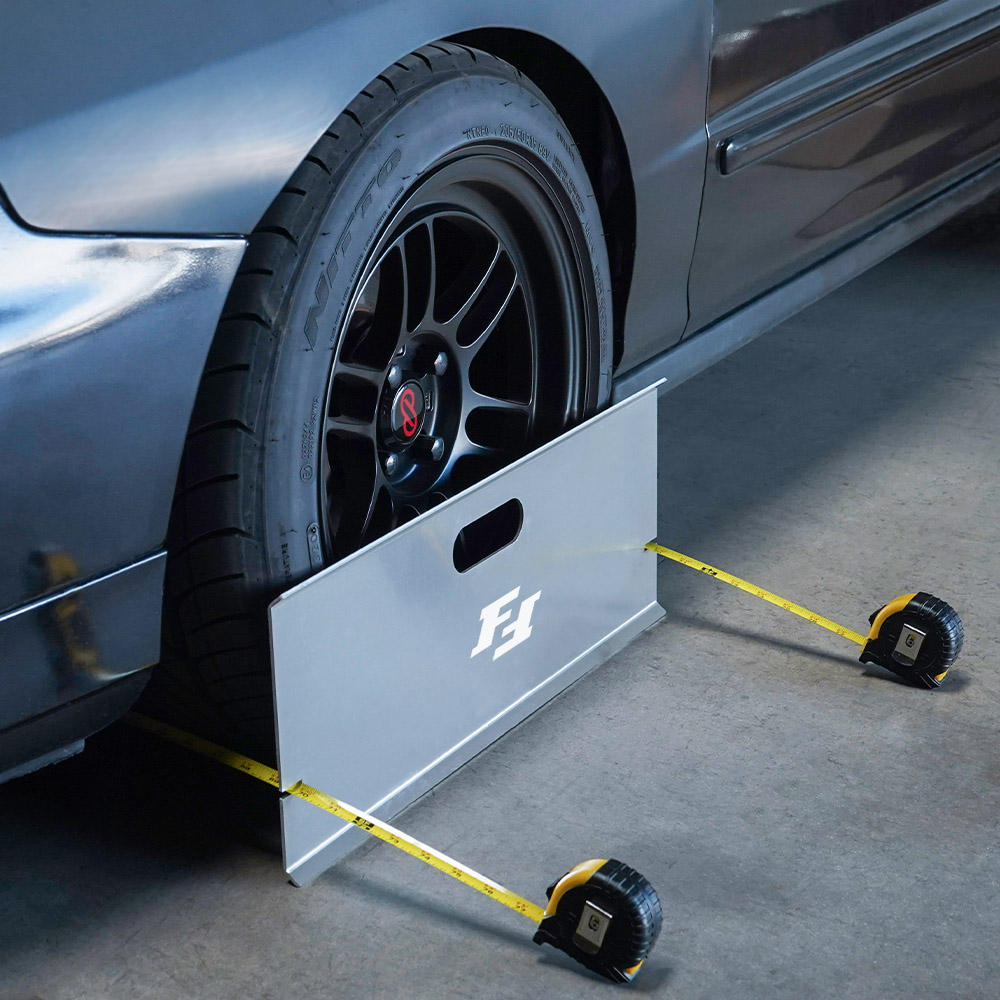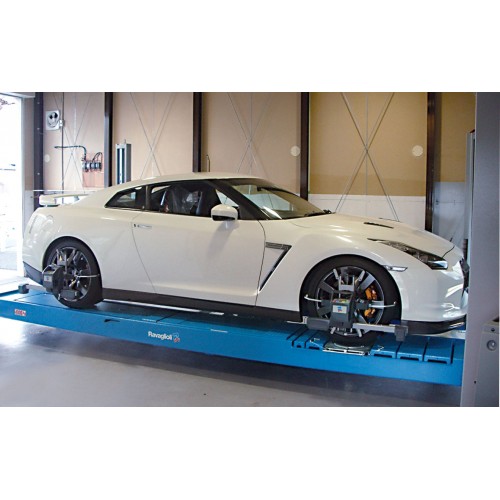Car Wheel Alignment Tools The Key to a Smooth and Safe Ride
Driving a car with misaligned wheels can be a nightmare. Not only does it affect your driving experience, but it also puts you at risk on the road. That's why regular wheel alignments are crucial for maintaining your vehicle's performance and safety. And when it comes to wheel alignments, having the right tools is essential. In this article, we will delve into the world of car wheel alignment tools and discover their importance in ensuring a smooth and safe ride.
The Basics of Wheel Alignment

Before we dive into the different types of wheel alignment tools, let's first understand what wheel alignment is and why it's important. Wheel alignment, also known as tire alignment, is the process of adjusting the angles of your car's wheels to ensure they are parallel to each other and perpendicular to the ground. This adjustment helps your tires make proper contact with the road, resulting in better handling, improved fuel efficiency, and reduced wear and tear.
There are three main aspects of wheel alignment that need to be adjusted: camber, toe, and caster. Camber refers to the inward or outward tilt of your wheels when viewed from the front of your car. Toe measures the angle at which your tires point in or out when viewed from above. Finally, caster is the angle created by the steering axis and vertical axis of your wheels. All these angles need to be precisely aligned to ensure optimal performance and safety while driving.
Types of Car Wheel Alignment Tools

Now that we have a basic understanding of wheel alignment, let's take a closer look at the different tools used to achieve it.
1. Wheel Aligner Machines
Wheel aligner machines are the most common and advanced tools used for wheel alignment. These machines use sensors and cameras to measure the angles of your car's wheels and provide precise readings. They come equipped with software that interprets the data and displays it on a screen, making it easier for mechanics to adjust the alignment accordingly. Wheel aligner machines are more accurate than manual methods, making them a popular choice for professional shops.
Types of Wheel Aligner Machines
- 3D Wheel Aligners: These aligner machines use 3D cameras and sensors to measure the angles of all four wheels simultaneously, providing quick and accurate results.
- Wireless Wheel Aligners: As the name suggests, these machines do not require any physical connection between the sensors and the control unit, making them more convenient and efficient.
- Bluetooth Wheel Aligners: Similar to wireless aligners, these machines use Bluetooth technology to connect the sensors and the control unit, making data transfer quicker and smoother.
2. Alignment Lifts

Alignment lifts are essential tools used in wheel alignment. These lifts are specially designed to support the weight of your car while lifting it off the ground, making it easier for mechanics to access the underside of the vehicle. Alignment lifts come in different sizes and shapes, depending on the type of vehicle they are built for. Smaller cars may require two-post or scissor lifts, while larger vehicles like trucks and SUVs may need four-post or drive-on lifts.
Types of Alignment Lifts
- Two-Post Lifts: These lifts have two columns that hoist the vehicle by its frame, providing stability and flexibility for wheel alignment procedures.
- Four-Post Lifts: As the name suggests, these lifts have four columns, providing more stability and weight capacity for larger vehicles.
- Scissor Lifts: These lifts use a scissor-like mechanism to raise the vehicle off the ground. They are compact and ideal for smaller garages or workshops.
- Drive-On Lifts: These lifts have ramps that allow the vehicle to be driven onto them, making it easier to position the vehicle for proper alignment.
3. Alignment Tools and Gauges

Alignment tools and gauges are manual tools used by mechanics to measure the angles of your car's wheels. These tools are essential for quick and accurate adjustments during wheel alignment procedures. Some common alignment tools and gauges include:
- Toe Plates: These plates are placed on each side of the front or rear tires to measure the toe angle.
- Camber Gauges: These gauges measure the camber angle by attaching them to the wheel hub and using a bubble level to determine the tilt.
- Caster Gauges: Similar to camber gauges, these tools measure the caster angle of your wheels.
- Turntables: These rotating plates allow the wheels to be turned while measuring the caster and camber angles.
- Thrust Angle Gauges: These gauges measure the thrust angle, which is the difference between the centerline of the rear axle and the centerline of the vehicle.
FAQs about Car Wheel Alignment Tools
What is the recommended frequency for wheel alignments?
Most manufacturers recommend getting a wheel alignment every 10,000-12,000 miles, or once a year, whichever comes first. However, if you notice any signs of misalignment, such as uneven tire wear or pulling to one side, it's best to get it checked immediately.
Can wheel alignment tools be used for all types of cars?
Yes, there are different types of wheel alignment tools available that cater to all types of vehicles, from small cars to large trucks.
Is it possible to do a wheel alignment at home?
While it is possible to do a basic wheel alignment at home using alignment tools and gauges, it's always best to have a professional mechanic perform the procedure for optimal results.
How long does a wheel alignment take?
A standard wheel alignment usually takes about an hour to complete, but it can vary depending on the condition of your car's suspension and steering components.
What are some signs that my car needs a wheel alignment?
Some signs that your car may need a wheel alignment include uneven tire wear, vibrations in the steering wheel, pulling to one side while driving, or a crooked steering wheel when driving straight.
Conclusion
Car wheel alignment tools play a crucial role in maintaining your vehicle's performance and safety. Whether you opt for advanced aligner machines or manual tools, regular wheel alignments are essential for prolonging the life of your tires and ensuring a smooth and safe ride. So, next time you're at the mechanic, make sure to ask about the type of tools they use for wheel alignment to ensure your vehicle is in good hands.



